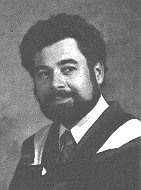Robert M. MacKay

B. Sc. Honours Thesis
Whole Rock Analysis using the Electron Microprobe
(PDF - 9.2 Mb)
Rock powders ranging in composition from a peridotite to a granite were fused on molybdenum and tantalum strips in a vacuum and a nitrogen atmosphere. A low voltage high amperage source was used to melt the rock powders. Samples weighing 200 mg and fused for 15 to 20 seconds produced glass beads suitable for analysis in the electron microprobe.
Good results were achieved on rocks with composition ranging from basalts to andesites. Relative errors were better than 5% for elements with concentrations greater than 1%. Elements with concentrations greater than 10% generally yielded relative errors better than 3%.
Rocks of a granitic or mafic composition produced good results when a flux was added. The relative error was generally better than 3% for elements with a concentration greater than 1%. The results for potassium in flux melts was poor. However, this should improve with the choice of suitable rock standards. Best results were achieved on flux melts when it was assumed that the difference between the oxide totals of the elements analysed and 100% had the composition of the flux.
Keywords:
Pages: 122
Supervisors: D. Barrie Clarke



